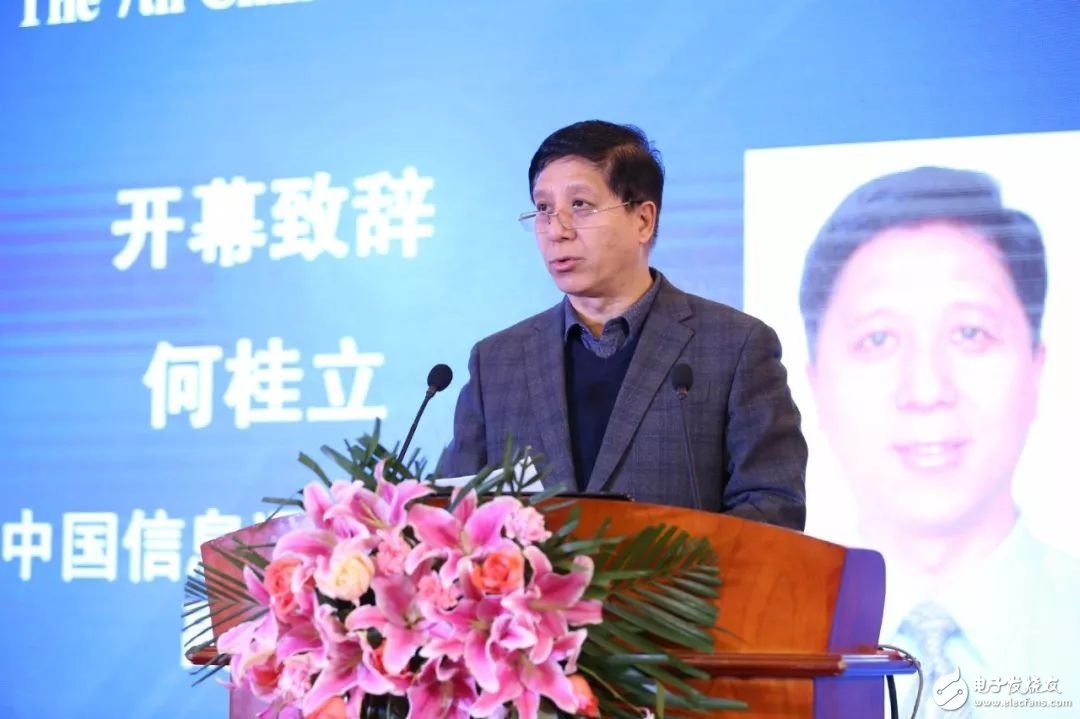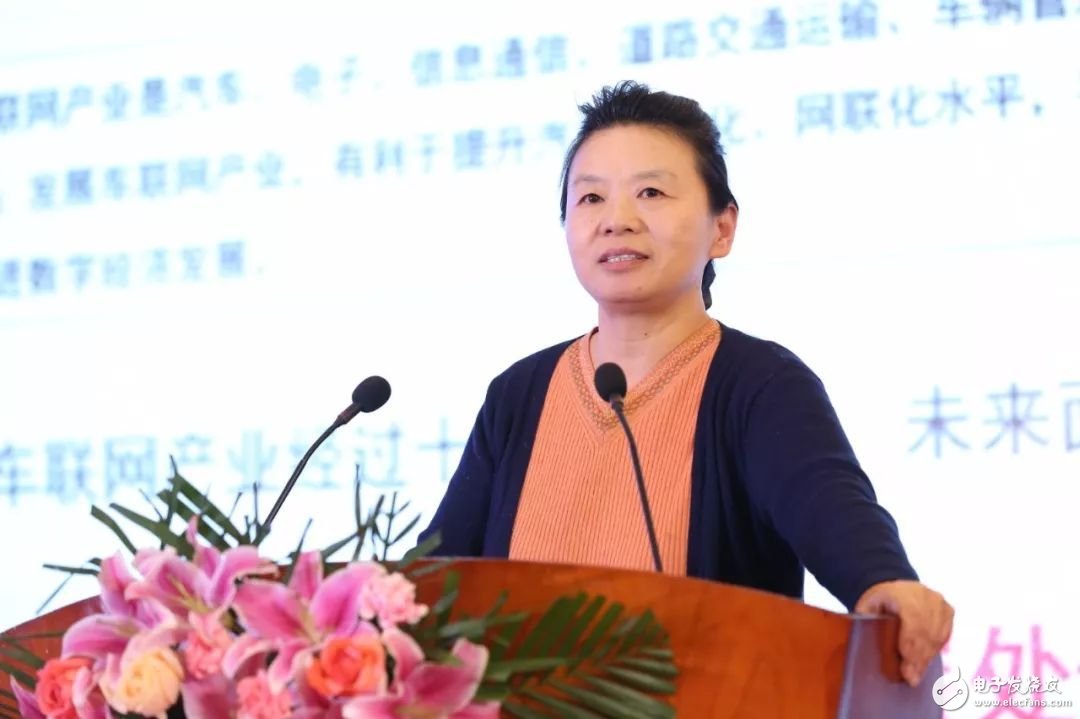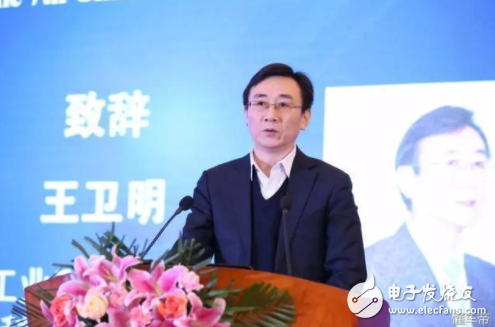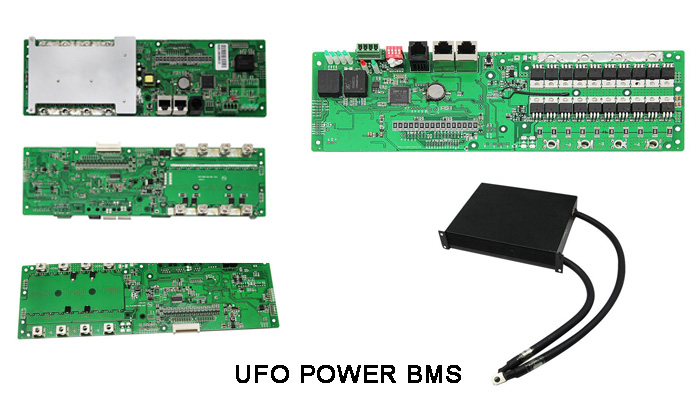With the deep integration of 5G, big data, cloud computing, artificial intelligence and other new-generation technologies and automobile transportation, the multi-dimensional information interaction network between vehicles, vehicles, roads, people and clouds is taking shape, and the level of intelligent vehicles is constantly improving. With the accelerated development of driving, integrated information services, and smart transportation, the car networking industry has become a hot spot and focus of international competition.
So, what kind of development stage is China's car networking industry in the moment? How is it applied? What kind of problems are facing now? How to go next?
On January 31, the 7th China Internet of Vehicles Conference was held in Beijing. During the meeting, the reporter interviewed the experts on the above topics.
Domestic car network development is in the second stageThe continuous improvement of car ownership has made the prospect of China's car networking industry promising. According to the data of “Deep Market Research and Investment Analysis Report of 2018 Vehicle Network Industry†released by New World Industrial Research Center, the 2017 China Car Network Front Equipment Market The scale is 4.49 billion yuan. By 2020, the scale of the car network pre-installation market will exceed 7.4 billion yuan. It can be seen that the market potential of the Internet of Vehicles is huge.

He Guili, Vice President of China Information and Communication Research Institute
He Guili, vice president of China Information and Communication Research Institute, told reporters: "Under the new technology background, China's car networking industry has entered a new stage of rapid development."
According to the reporter's understanding, with the three operators of China Mobile, China Telecom and China Unicom, there are already more than 16 million active users of car networking. Industry insiders expect that in the next three years, more than 20 automakers will launch or plan to deploy car networking services in China to cater to the growing consumer demand in the connected market. The explosive growth of the car networking industry has begun to emerge.

He Xia, deputy chief engineer of the Institute of Policy and Economics, China Information and Communication Research Institute
According to He Xia, deputy chief engineer of the Institute of Policy and Economics of the China Information and Communication Research Institute, after more than a decade of development, the definition of the Internet of Vehicles has changed from “the network formed by the connection of the vehicle operating system†to “except for providing information. There are some transportation applications that need to be provided in addition to the service."
Specifically, today's car networking mainly refers to the realization of all-round network connection between vehicles, vehicles and vehicles, vehicles and roads, vehicles and people, vehicles and service platforms with the help of a new generation of information and communication technologies. Horizontal and autonomous driving capabilities, building new formats for automotive and transportation services, thereby improving traffic efficiency, improving car driving experience, and providing users with intelligent, comfortable, safe, energy-saving and efficient integrated services. Network connectivity, car intelligence, and new service formats are the three cores of the Internet of Vehicles.
According to He Xia, the development process of China's car networking is mainly in three stages. At present, the development level of domestic car networking is in the second stage.
The first stage is mainly the development stage of the vehicle information service. This stage mainly connects the cars through 2G, 3G and 4G applications, and opens up the problem of information flow inside and outside the vehicle. "In this stage, there are more used on the road, and even what is just needed is the application of networked navigation." He Xia told reporters.
The second phase is mainly the advancement of information services to the use of security and energy effects.
The third stage is to enter the automatic driving stage with the development of the entire network and the intelligent development of the car. "To further increase the penetration rate of the car network, and the related networking technology and intelligent technology continue to increase, it is possible to reach this stage." He Xia stressed.
At present, each operator operates frequently. China Mobile has released a new integrated solution for the Internet of Vehicles, launching two brands, “Helian†and “Hetongâ€, and signed cooperation agreements with SAIC, Huawei and Changan Automobile to jointly promote smart travel services and The development of a generation of cellular car networking industry. China Telecom, Baidu and Datang jointly released the “Unmanned Action Plan Based on Vehicle Network†and released the world's first 4G intelligent ETC terminal at the 2017 China Internet of Vehicles Conference. China Unicom cooperates with industry partners such as Xingyun Internet, ZTE, Datang Telecom, Ford China, and FAW to showcase the cellular vehicle networking (C-V2X) application solution. Its Unicom Zhi network technology and Huawei signed a contract, which will be in 5G/LTE. -V2X, car networking platform and other aspects of in-depth cooperation.
So, what kind of application value does the Internet of Vehicles with huge market potential and is in a rapid development stage play in daily life?
Applicable value in practical, convenient, and efficient scenarios

Vice President and Deputy Secretary General of China Communications Standards Association Dai Xiaohui
According to Dai Xiaohui, vice chairman and executive deputy secretary-general of China Communications Standards Association, car networking is an important means to realize intelligent dynamic information services, vehicle intelligent control and intelligent traffic management applications. It is the depth of Internet of Things and smart cars. The integrated application is a specific field of in-depth integration of informationization and industrialization. The development of the Internet of Vehicles will greatly improve the safety of automobiles and traffic, promote the development of green, drive information consumption, and have a profound impact on the development of many industries.
He Xia also expressed similar views. She said: "The Internet of Vehicles industry is a new industrial ecosystem with deep integration of industries such as automobile, electronics, information and communication, and road traffic transportation management. The development of the car networking industry is conducive to improving automotive intelligence and network. Level of automation, automatic driving, development of intelligent transportation, and promotion of digital economic development."
Experts at the conference introduced that after the vehicle is connected to the Internet, one can extend the flow from the personal field to the car scene, which will greatly break the “ceiling†of traffic growth; second, in the automotive application scenario, it can create navigation, music, Diversified application scenarios such as catering, shopping, film and television sharing, logistics, security, and business-based business models; third, the software and hardware sales of the Internet of Vehicles is also an important market.
Specifically, in practical application scenarios, the application of the Internet of Vehicles can enhance the safety of vehicles and driving. In the future car network environment, cars will generate thousands of data points per second, providing customers and car dealers and manufacturers with the necessary information, which can help car owners predict ahead of time before problems occur. Car telematics allows the car to have a large number of safety features that keep the vehicle connected and improve safety in emergency situations, such as automatic collision notification, stolen vehicle tracking, roadside assistance, and more. The car tracking reminder device, when the car is driving beyond a predetermined boundary or crossing a preset limit speed, the designated user will receive a notification that the vehicle will be continuously tracked.
In addition, the Internet of Vehicles and the insurance industry can be interconnected. According to statistics, “Car Network + Insurance†can reduce the driver's accident rate by 20%, save the claim cost by 30%, and increase the underwriting profit rate by 15%.
In terms of convenient application scenarios, the application of the Internet of Vehicles can make people's car life more convenient. With the intelligent development of the vehicle platform, more services can be realized through voice and gesture control, which helps to create a safer driving experience. For example, information and entertainment services, through the built-in mobile hotspot conversion technology, people can buy and download songs, audio books, maps, etc. in the car. It can also be connected with merchants. In the future, people can use the Internet of Vehicles technology to book restaurants and shop over the city through voice or gesture control.
In terms of efficiency application scenarios, the application of the Internet of Vehicles can fully realize intelligent transportation. First, after the vehicle system is implemented in the Internet of Vehicles, people can automatically update the vehicle to the latest firmware and software without going to the 4S store. Secondly, on the in-vehicle remote service, the customer can remotely control the car through the wireless device, such as positioning Vehicles parked in the parking lot, send navigation information to the vehicle, and remote start. In addition, intelligent transportation can be realized through the Internet of Vehicles, which can effectively improve existing road congestion, predict traffic safety hazards in advance, and greatly improve people's travel efficiency while ensuring travel safety.
It is not difficult to see that the car network can realize intelligent dynamic information service, intelligent vehicle control, and even the application of intelligent traffic management in the whole city through communication and information exchange between V2X.
Three types of problems stand out: safety, standards, and costExperts attending the conference introduced that there are a series of problems in the industrialization of China's car networking. The most prominent problems are mainly reflected in information security, standards and costs.
Specifically, the first is that information security is difficult to guarantee. The Internet of Vehicles and the Internet of Things have similar application technologies. In the application process, everyone's detailed information will be connected to the network anytime, anywhere, and be perceived anytime, anywhere. Such signals exposed in public places are easily stolen and more susceptible to interference, which will directly affect the safety of the Internet of Vehicles system. How to ensure the security and privacy of information in the Internet of Vehicles environment, to avoid virus attacks and malicious damage, to prevent personal information, business information and property from being lost or stolen by others, will be a major problem that needs to be broken in the development of the Internet of Vehicles. . This aspect requires continuous improvement on the technical level. On the other hand, it requires speeding up the formulation and improvement of the relevant laws and regulations system for vehicle networking, and provides a solid legal guarantee for the promotion and application of the Internet of Vehicles.
Second, there is no uniformity between standards and structures. To promote the healthy development of the Internet of Vehicles, it is necessary to make full use of the current Internet standards and its ecosystem. The great success of the Internet is largely due to open standards and open architecture. Therefore, the future of the Internet of Vehicles should work with the Internet to create a common user experience. Future solutions should be used on the Internet as well. It can be used in the Internet of Vehicles, which will also help the Internet of Vehicles technology to keep up with the rapid development of mobile phones and computers. Therefore, the communication industry and the automotive industry need to strengthen exchanges and cooperation, and there should be more exchanges and interactions between the two industries. The automotive industry should be more proactive in letting the telecommunications industry understand the demand of the automotive industry for communication networks. When the communication industry develops network technology standards and network construction plans, it is difficult to understand the needs of the automotive industry or the development of the vehicle network. Its future development provides strong support.
The third is that the cost is relatively expensive. The construction of facilities related to the Internet of Vehicles is also costly. For example, to build a huge wireless network, it will cost a lot of money, which is undoubtedly a bottleneck in the development of the Internet of Vehicles.
In addition, there are still many new problems in the application process of the Internet of Vehicles. For example, in the promotion of the Internet of Vehicles, it also faces problems such as imperfect technology, the use of technical barriers for vicious competition, intellectual property protection, and compliance with laws and regulations.
Future development: data openness and cross-departmental cooperation are the most importantIn the face of the problems in the development of the Internet of Vehicles, how should the next step in the Internet of Vehicles industry go?

Gao Xinmin, Vice Chairman of China Internet Association
In the view of Gao Xinmin, vice chairman of the China Internet Association, on the one hand, under the impetus of the government, an ecological environment with open and healthy and orderly competition should be established.
On the other hand, it is important to focus on the data. "Now the opening of traffic data and the sharing of cross-sectoral cross-sectors, I think it is the core of intelligent transportation. In the previous burst, the Ministry of Communications took the lead in adopting a government-enterprise cooperation approach to engage in a traffic data cloud, which is to open government data with government and enterprises. Pulling the entire traffic big data, this kind of open sharing in management, I think this is a very good practice." Gao Xinmin said.

Wang Weiming, Deputy Director, Department of Science and Technology, Ministry of Industry and Information Technology
Wang Weiming, deputy director of the Department of Science and Technology of the Ministry of Industry and Information Technology, pointed out that the further development of the Internet of Vehicles needs to strengthen the "three" cooperation: First, strengthen innovation cooperation, only the industry will work together to strengthen the exchange and cooperation between the core technologies and common technologies of the Internet of Vehicles. In order to jointly promote the development of smart sensors and intelligent platforms.
The second is to strengthen industrial cooperation. At present, it is a crucial period for the breakthrough of industrial development. There are many departments and industries involved, and it is necessary for the industry to work together. According to Wang Weiming, the Ministry of Industry and Information Technology is actively promoting the development of new technologies and services for the Internet of Vehicles. In the system, an inter-departmental car network coordination and communication mechanism was established. The National Manufacturing Powerhouse Construction Leading Group established a special committee for the development of the car network industry, led by the Ministry of Industry and Information Technology, and jointly organized 20 departments including the Ministry of Public Security, the Ministry of Transport, and the National Development and Reform Commission. Joint coordination mechanism to promote the resolution of laws and regulations, standards, key technology research and development issues.
The reporter also learned that at this stage, the Ministry of Transport, the Ministry of Science and Technology and other relevant ministries and commissions also indicated on various occasions that they will strengthen cooperation and build a standard system and policy environment in line with China's national conditions and characteristics, and encourage and promote the development of the car networking industry.
The third is to strengthen security cooperation, increase security technology research and development, establish a sound security management system, ensure the security of information transmission and other aspects, and provide effective protection for data security and user personal information protection.
For the next development of the Internet of Vehicles, the Minister of Industry and Information Technology, Miao Wei, clearly stated that it is necessary to speed up the development of vehicle networking and intelligent networked vehicles, strengthen radio frequency planning and maintenance of radio wave order, coordinate the use of frequency requirements for vehicle networking, and promote the field of vehicle networking. International exchange and cooperation.
Battery safety is the critical factor that users consider when they are used for different applications. Because of the high reactivity of Lithium Battery, at the heart of each lithium battery pack is a BMS (battery management system) to ensure battery safety. UFO POWER has been in the lithium battery industry for more than ten years. We have our own R&D team and provide Standard BMS and Smart BMS to cater to your specific requirement.
Multiple BMS Function
- Over discharge protection
- Over current protection
- Temperature protection
- Short circuit protection
- Charging balance function
- Cell capacity estimation function
What is a UFO BMS equipped with?
- LED Indicators
- Memory Function
- Dry Contact Function (optional)
- LCD Display Function (optional)
- Total Capacity Function: Total discharge capacity Ah and total discharge energy Wh

The Function of Communication Interface
â— RS232 Communication InterfaceBMS can communicate with the host computer through the RS232 interface, so as to monitor the battery information at the upper computer terminal, including battery voltage, current, temperature, state, SOC, SOH and battery production information, etc.
â— RS485 Communication Interface
With RS485 interface, when the LiFePO4 Battery Pack is used in parallel, the main battery pack communicates with the slave battery ack through RS485 communication interface,so all the battery pack information can be viewed through the RS232 on the main Pack.
Battery Bms,Telecommunication Lithium Battery,Solar Battery Bms,48V Lithium-Ion Battery
ShenZhen UFO Power Technology Co., Ltd. , https://www.ufobattery.com
